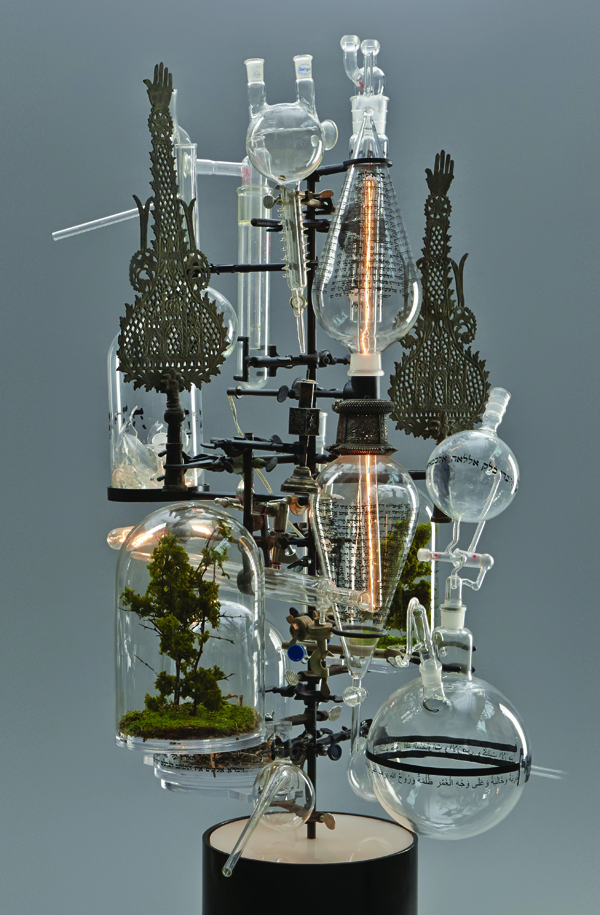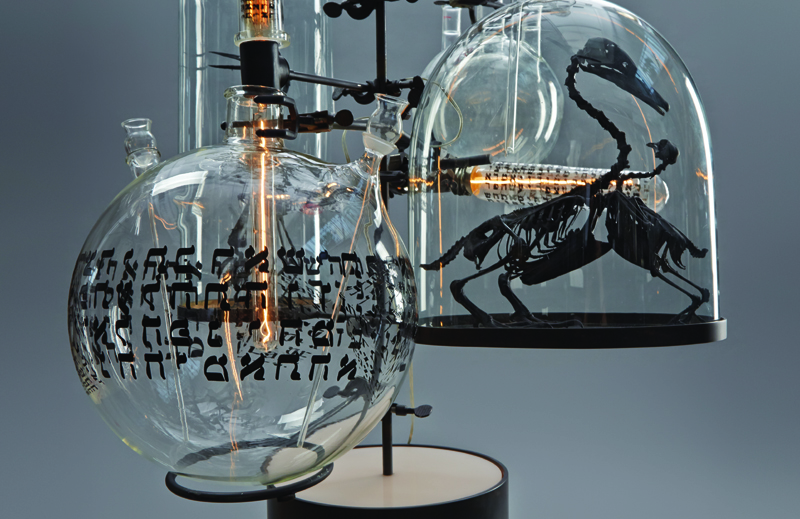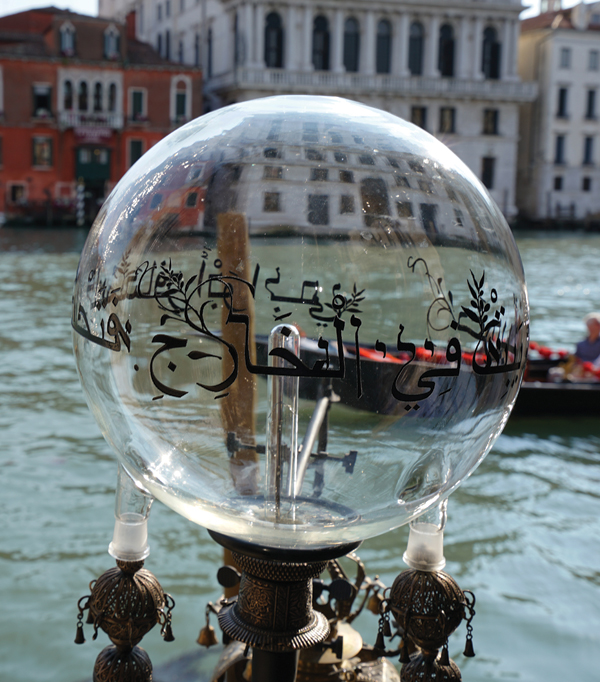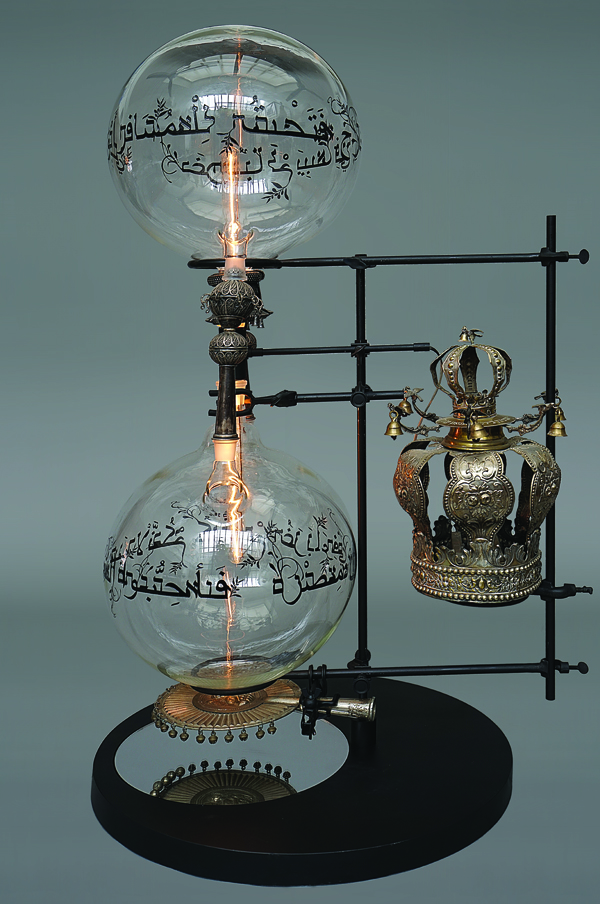layers
GHIORA AHARONI:FUSING SCRIPTS,SCULPTURES ANDCULTURES |
I n exhibitions from Mumbai to Venice to New York, multi-disciplinary artist and designer Ghiora Aharoni parses the meaning of language, identity, religion and science, the social and spiritual significance of artifacts, and the imperative of intercultural understanding and respect. Born and raised in Rehovot, Israel, Aharoni opened his multi-disciplinary studio in Manhattan in 2004, after having worked at several distinguished architecture firms in New York and receiving his Master’s Degree in Architecture from Yale University. A major component of Aharoni’s art involves the intricate interweaving of scripts and texts. In 2010, inspired by the shared etymology of the word “home,” he began fusing Hebrew and Arabic, creating a script for which he coined the term “Hebrabic/ Arabrew©” and received a copyright. Sacred texts in the script, which are sometimes altered to extricate new meaning, appear throughout Aharoni’s work in glass, wood, steel, aluminum and paper. In his Genesis Series, a collection of seven sculptures investigating the dialogue between the empirical world and religious belief, Aharoni explores the seven days described in the story of creation through an assemblage of vintage laboratory equipment, iconic symbols, 18th and 19th century Torah finials from Yemen, Iraq and Morocco, and the Genesis text from the Torah. The work invites ruminations on the dichotomy of science and religion, with the unifying presence of light embodying a duality: the rational light of scientific truth on the one hand, divine illumination on the other. His GER/The Stranger is currently on view in Venice in the exhibition “Divided Waters,” as part of the official municipal events commemorating the 500th anniversary of the founding of the Jewish Ghetto. In the sculpture, Jewish and Christian religious iconography and two nearly identical glass spheres conjoined by vintage Torah finials evoke the parallel existences engendered by the historical segregation of the Jews of Venice. The sculpture’s totemic, hourglass shape conveys a sense of time and of repetition, recalling the enduring struggle of humanity’s relationship with otherness. But the sculpture is not resigned to defeatism. Engraved on the spheres is Hebrabic/Arabrew “The stranger shall not lodge in the street: I will open my doors to the traveller” (Job 31:32) and “Love the stranger, for you were strangers in the land of Egypt.” (Deuteronomy 10:19) The passages bring a message of compassion, inclusion and coexistence as resonant and relevant today as it was in 1492, when Jews and Muslims sought refuge elsewhere in Europe and throughout the world after the Spanish Inquisition. ■ |

| |

| |

| |

| |
|
Above: “Genesis.” Opposite, top: “Genesis” detail. Bottom: “GER Grand Canal” detail, “GER” side view.. |
| PREVIOUS ARTICLE | NEXT ARTICLE |